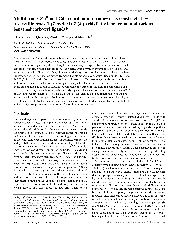摘要
A new family of Zn-II and Cd-II coordination complexes 1-8 with a multifunctional building block trans-1-(2-pyridyl)-2-(4-pyridyl)ethylene (bpe) have been prepared at ambient conditions in water-methanol solution, by varying the auxiliary benzenedicarboxyl co-ligands from the familiar isophthalic acid (H(2)ip) and terephthalic acid (H(2)tp) to their derivatives 5-hydroxylisophthalic acid (H(2)hip) and tetrabromo-terephthalic acid (H(2)tbta). Single-crystal X-ray diffraction indicates that these complexes display a variety of coordination motifs, from the discrete mononuclear species (8) to infinite 1-D (1 and 7), 2-D (3, 5, and 6), and 3-D (2 and 4) metal-organic networks. Furthermore, extended supramolecular architectures are constructed for these complexes via predictable secondary interactions such as hydrogen bonding and aromatic stacking. A comprehensive structural analysis and comparison of 1-8 reveals that their crystalline lattices can be properly regulated by a selection of different metal ions (Zn-II or Cd-II) and benzenedicarboxyl co-ligands, as well as the versatile building functionality of the bpe tecton, which can be readily involved in both coordination and secondary interactions. Notably, this work first demonstrates that bpe can also be applied as an angular bridging spacer by using both the 4- and 2-pyridyl groups to construct novel Cd-II coordination frameworks.
- 出版日期2010
- 单位天津师范大学
